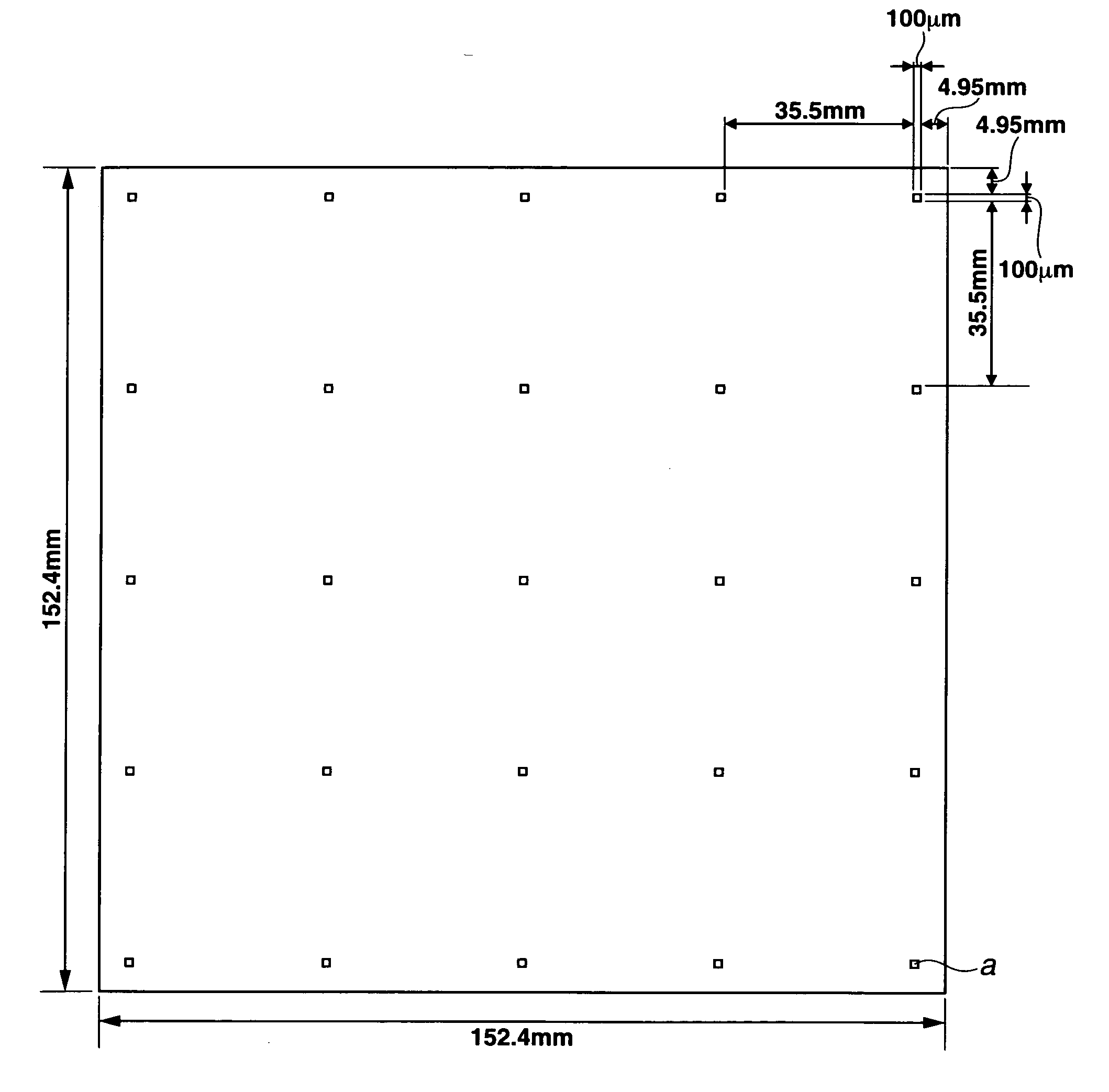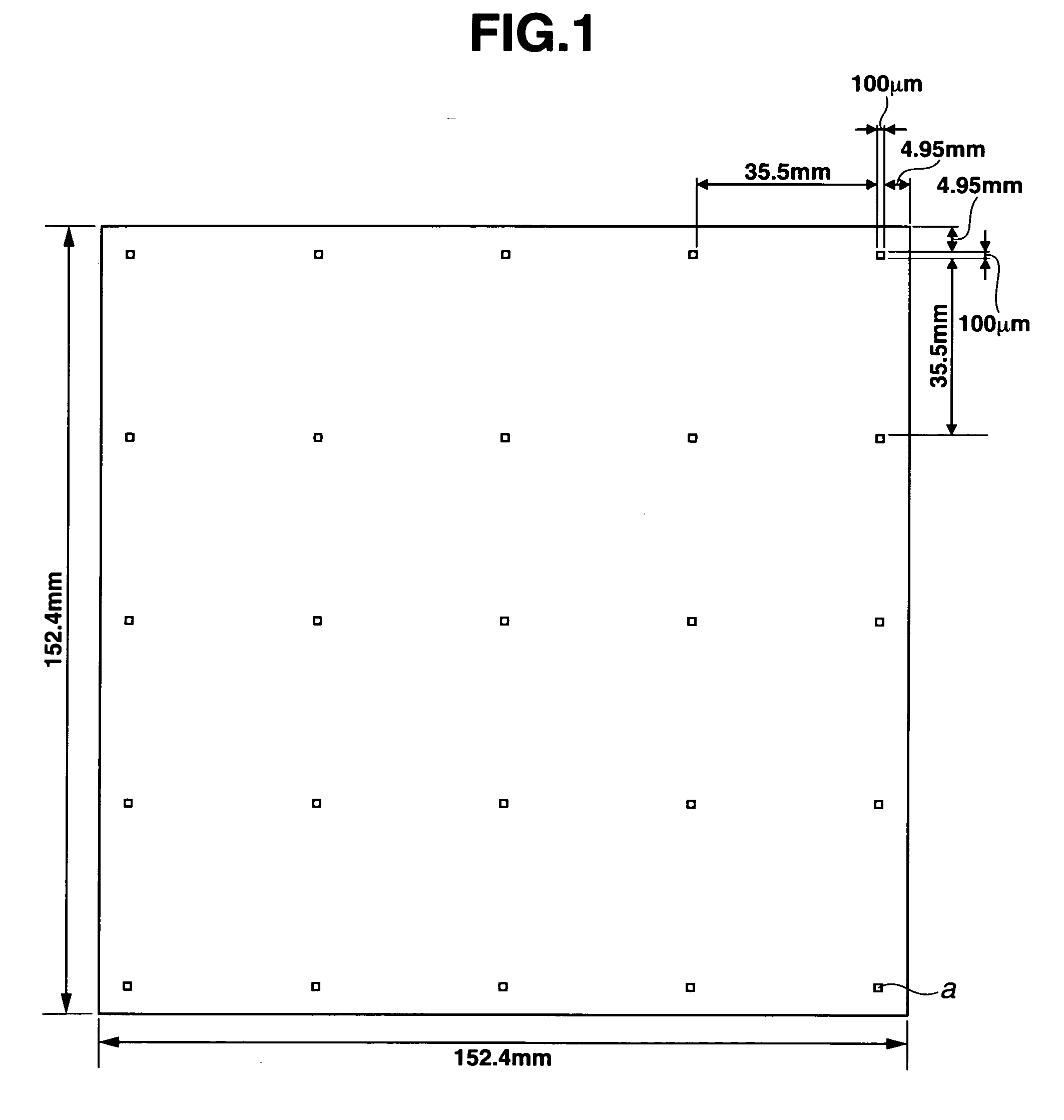Titania-doped quartz glass and making method, EUV lithographic member and photomask substrate
a technology lithographic member, applied in the field of titaniadoped quartz glass, can solve the problems of heterogeneous structure and composition, adversely affecting lithography accuracy, etc., and achieves high surface accuracy, improved flatness and thermal expansion, and high homogeneity.
- Summary
- Abstract
- Description
- Claims
- Application Information
AI Technical Summary
Benefits of technology
Problems solved by technology
Method used
Image
Examples
example 1
[0057] A titania-doped quartz glass production furnace included a quartz burner, gas feed lines connected thereto, and a rotatable target located forward of the burner. 10 m3 / hr of hydrogen gas and 6 m3 / hr of oxygen gas were fed to the burner to produce an oxyhydrogen flame while 1000 g / hr of silicon tetrachloride and 100 g / hr of titanium tetrachloride as source materials were fed to the burner. The oxyhydrogen flame-assisted hydrolysis reaction of silicon tetrachloride with titanium tetrachloride produced SiO2 and TiO2, which were deposited on the target which was rotated at 50 rpm and retracted at a speed of 10 mm / hr. In this way, an ingot of titania-doped quartz glass was produced. During the process, the flow rates of the feed gases were kept at a variation of ±0.2% / hr. The temperatures of air fed to the furnace, the gas discharged out of the furnace, and the ambient atmosphere around the furnace were kept at a variation of ±1° C.
[0058] The ingot thus obtained was hot molded in...
PUM
| Property | Measurement | Unit |
|---|---|---|
| thickness | aaaaa | aaaaa |
| transmittance | aaaaa | aaaaa |
| thickness | aaaaa | aaaaa |
Abstract
Description
Claims
Application Information
 Login to View More
Login to View More - R&D
- Intellectual Property
- Life Sciences
- Materials
- Tech Scout
- Unparalleled Data Quality
- Higher Quality Content
- 60% Fewer Hallucinations
Browse by: Latest US Patents, China's latest patents, Technical Efficacy Thesaurus, Application Domain, Technology Topic, Popular Technical Reports.
© 2025 PatSnap. All rights reserved.Legal|Privacy policy|Modern Slavery Act Transparency Statement|Sitemap|About US| Contact US: help@patsnap.com


